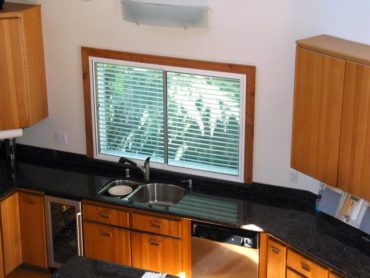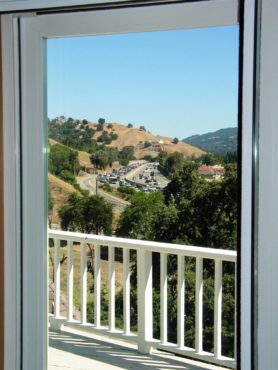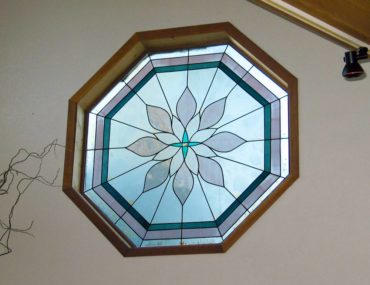 For homeowners, the trend is to replace old windows with new, modern, dual-pane, wood or vinyl frame, replacement windows. However, what is trendy isn’t always best for you.
For homeowners, the trend is to replace old windows with new, modern, dual-pane, wood or vinyl frame, replacement windows. However, what is trendy isn’t always best for you.
Replacement windows are fine if a new look and some energy savings are the goal, but will do little if reducing outside noise to get peace and quiet indoors is the real problem.
The challenge is that replacement windows are not really designed to reduce noise, and the vast majority of exterior noise enters through windows, not walls. So, when life is crazy and you want to create a cozy sanctuary at home to soothe your jangled nerves, it often makes more sense to improve your existing windows than replace them.
That’s why a cost-effective countertrend is developing to keep existing windows but enhance function by placing a soundproof, matching inner window inside the existing windows. This method can stop up to 95 percent of outside noise, while enhancing energy savings and safety. It not only provides extra thermal insulation, but also a virtually shatterproof barrier that deters intruders.
Because no window replacement is required, the installation process can take as little as an hour per window, which minimizes home disruption. A similar technique, which installs a functional, matching patio door inside or outside of an existing one, also provides comparable benefits for patio doors.
Keep the Noise Out
From screeching traffic and blaring car/train horns to barking dogs and roaring leaf blowers, dual-pane windows will not keep out the noise because they are not designed to do so. The problem with a typical dual-pane window is that the dual panes act like a drum and reverberate in response to external noise vibrations.
The result is that the noise as sound vibrations transfers right through the panes. On top of this, the seals of most dual-pane windows degrade within a few years, which allows even more outside noise to pass through.
 Some replacement window companies tout single-pane, acrylic windows as soundproofing. However, acrylic panes in typical quarter-inch thicknesses lack sufficient mass to stop much noise. Acoustic testing has demonstrated that a single-pane, acrylic window must be at least 3/8-inch thick before it provides a good acoustic soundproofing value.
Some replacement window companies tout single-pane, acrylic windows as soundproofing. However, acrylic panes in typical quarter-inch thicknesses lack sufficient mass to stop much noise. Acoustic testing has demonstrated that a single-pane, acrylic window must be at least 3/8-inch thick before it provides a good acoustic soundproofing value.
An even more effective solution incorporates recording studio soundproofing technology to block up to 95 percent of external noise penetration, which can make unwanted noise sound like it is at least two football fields farther away.
This approach first dampens sound vibrations with an inner window of laminated glass installed behind the existing window. The lamination acts like a finger placed on a vibrating wine glass to deaden the sound vibrations when struck. An inner layer of tough polyvinyl, similar to that used in car windshields, further dampens sound vibrations.
Next, air space of 2-4 inches between the existing window and the soundproof window also significantly improves noise reduction because it isolates the window frame from external sound vibrations.
Finally, spring-loaded seals in the second window frame put a constant squeeze on the glass panels. This prevents sound leaks and helps to stop noise from vibrating through the glass. The spring-loaded seals are designed to stay acoustically sound for decades.
 Energy Efficiency
Energy Efficiency
Typical windows and glass patio doors are notorious causes of home heating and cooling loss. They transfer heat and cold by thermal conduction through the panes and glass surface, so additional heating or cooling is required to keep everyone comfortable.
Air leakage through window and patio door seals that crack over time also worsens the problem. While single-pane windows transfer the most heating and cooling, even dual-pane windows may be insufficient to keep homes sufficiently warm in winter and cool in summer without raising utility costs.
As a solution, adding an inner insulating window to existing windows and a “second sliding patio door” that can be installed inside or outside of the existing door can dramatically improve thermal efficiency.
This approach provides an additional layer of insulation with better insulation values than the best double-pane windows, and substantially improves insulation values for dual-pane windows as well.
The second sliding patio door has even greater insulation value due to its greater surface area. This can reduce heat loss by 77 percent or more for single-pane windows and heating/cooling bills by up to 30 percent, while stopping air infiltration for further energy savings and greater comfort.
Improve Security
Another important side benefit to this soundproofing approach is security enhancement, since its construction helps to deter burglary or breaking and entering through typical windows or sliding glass doors.
While standard windows or tempered glass sliding doors can be shattered by a sharp blow, the laminated glass used in such soundproofing offers significant break in protection because it is shatter-resistant and tends to remain intact even after repeated blows. Such laminated glass is actually a major component of most bulletproof glass.
The Bottom Line
If you want to change the curbside appearance of your home, you still might consider replacement windows. But if stopping outside noise from driving you crazy during the day or keeping you up at night is important — or cutting your energy bill or improving home security — then you may want to add an inner window or patio door instead.
As an added plus, the cost can often be less, depending on window size or the noise reduction sought. Also, installation can take a fraction of the time of replacement windows, and can even be done as a DIY project for additional savings.




























